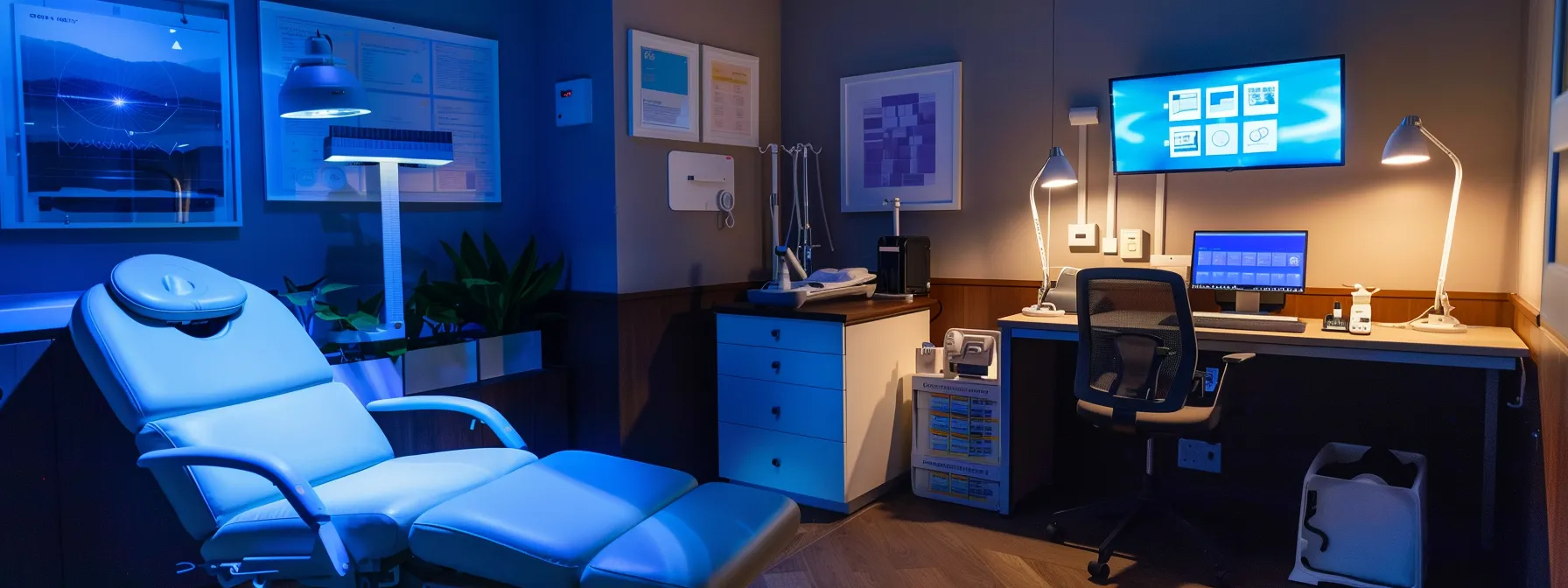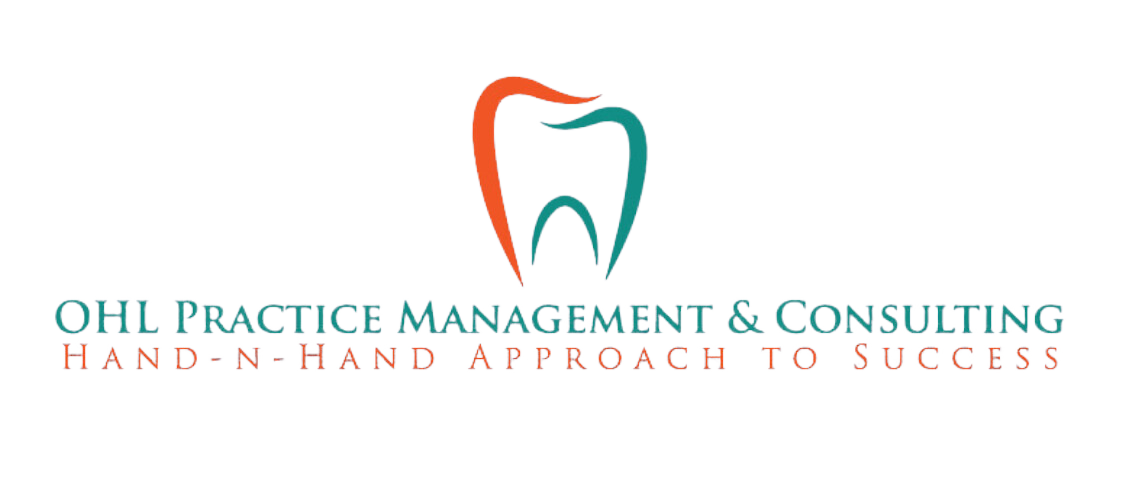How to Enhance Patient Engagement in Sleep Medicine
Many dental practices struggle to engage patients in sleep medicine, yet patient involvement is crucial for effective treatment. This post will discuss the significance of patient engagement, effective communication strategies, and the role of technology in enhancing participation. By implementing these insights, dental teams can improve patient understanding and satisfaction while addressing common issues like body mass index concerns. Those looking to enhance their practice’s sleep medicine services will find valuable strategies here, making it easier for patients to request appointments and receive the care they need.
Key Takeaways
- Effective patient engagement enhances communication and improves treatment outcomes in dental sleep medicine
- Open dialogue addresses patient anxieties, leading to better adherence to treatment plans
- Identifying barriers to engagement is crucial for creating a supportive treatment environment
- Utilizing technology can streamline communication and empower patients in their care journey
- Sharing success stories motivates patients to actively participate in their treatment and care
Understand the Importance of Patient Engagement in Dental Sleep Medicine

Effective patient engagement in dental sleep medicine evolution is crucial for enhancing communication and addressing common barriers to treatment, such as the request appointment process. By recognizing the benefits of clear patient dialogue, analyzing feedback, and understanding the connection between engagement and treatment outcomes, practices can improve quality and reduce risks. Research supports that active participation significantly influences patient success in sleep medicine.
Recognize the Benefits of Improved Patient Communication
Improved patient communication in dental sleep medicine can make a significant difference in treatment outcomes. By fostering open dialogue regarding concerns related to orthodontics, TMD, jaw positioning, and mouth health, practices can address patient anxieties and misconceptions. This proactive approach helps patients feel more at ease and engaged, ultimately contributing to better adherence to treatment plans and reducing the chances of nighttime arousal disruptions.
Identify Common Barriers to Patient Engagement
Identifying common barriers to patient engagement in dental sleep medicine is essential for improving therapy outcomes. Many patients may experience fear or confusion regarding their conditions, including risks linked to periodontology or prosthodontics, that prevent them from actively participating in their treatment. Additionally, a lack of clear information about their treatment options can lead to frustration and detachment, making it vital for dental practices to create a supportive environment that fosters open communication and addresses these concerns:
Analyze Patient Feedback to Enhance Services
Analyzing patient feedback is an effective way to enhance services in dental sleep medicine. By collecting insights from patients, practices can identify stressors and pressures they face, enabling physicians to better tailor treatment plans. For instance, if patients report feeling overwhelmed by their options, clearer explanations from primary care professionals can ease their anxiety and boost engagement with their care.
Explore the Connection Between Engagement and Treatment Outcomes
The relationship between patient engagement and treatment outcomes in dental sleep medicine is undeniable. When patients actively participate in their care, including understanding how factors like occlusion and physical therapy affect their condition, they are more likely to adhere to treatment plans such as positive airway pressure therapy. This engagement not only reduces symptoms of fatigue but also enhances overall well-being, as patients feel more in control of their health journey.
Implement Effective Communication Strategies

To boost patient engagement in sleep medicine, practices should focus on effective communication strategies. This includes utilizing multi-channel communication approaches to reach patients, personalizing interactions based on individual needs, and fostering open dialogue addressing concerns like headaches or oxygen therapy. Incorporating educational materials and leveraging technology can further streamline communication, helping patients feel more informed and involved in their treatment journey.
Utilize Multi-Channel Communication Approaches
Utilizing multi-channel communication approaches is key in enhancing patient engagement in dental sleep medicine. By employing various platforms—such as emails, phone calls, and social media—practices can share important information about anatomy, airflow, and the links between hypertension and sleep issues. This approach not only personalizes communication but also ensures that patients are well-informed about polysomnography and the evolving landscape of dental sleep medicine, helping them feel more connected and invested in their treatment process.
Personalize Communication to Address Individual Needs
Personalizing communication within dental practices is vital for addressing individual patient needs, particularly concerning sleep medicine. By considering a patient’s medical history and discussing their specific issues, such as snoring or breathing difficulties, practitioners can tailor their approach. Collaborating with a patient’s primary care physician to ensure consistent messaging around treatment options can significantly enhance understanding and compliance, making the journey to better sleep smoother for everyone involved:
Foster Open Dialogue for Patient Concerns and Questions
Fostering open dialogue is essential in addressing patient concerns regarding sleep medicine. Practitioners should encourage patients to express their worries about conditions affecting the tongue or tissue surrounding it, as this promotes better understanding of their treatment options. By actively listening to feedback on issues like pain management and related treatments, dental teams can create a supportive atmosphere that enhances patient confidence and engagement.
- Encourage patient feedback to identify concerns.
- Address specific issues related to tongue and tissue health.
- Listen actively to enhance pain management discussions.
Incorporate Educational Materials to Aid Understanding
Incorporating educational materials is essential for improving patient understanding of sleep medicine. When patients learn about their diagnosis and the potential medical issues tied to sleep disorders, such as the impact on the neck or the risks of related diseases, they become more involved in their treatment. Providing clear, easy-to-understand resources can alleviate confusion and empower patients to engage actively in discussions about their care, ultimately leading to better health outcomes.
Use Technology to Streamline Communication
Utilizing technology can significantly enhance communication in sleep medicine practices. By implementing tools like patient portals and mobile apps, dental teams can provide patients with easy access to information about their treatment plans, including details on soft tissue health and sleep management strategies. This tech-savvy approach not only fosters a better understanding of how certain treatments can improve their quality of life but also encourages participation in programs like a 90-day transformation program to manage pain and support sleep health.
Develop a Patient-Centric Care Model

Creating tailored treatment plans with patient input helps ensure that care aligns with individual needs, while prioritizing patient comfort and convenience enhances adherence. Engaging family members in the treatment process fosters a supportive environment. Regularly gathering patient insights allows for continuous practice management improvements, and supporting patients in understanding their conditions leads to better outcomes and reimbursement potential, particularly within AADSM guidelines.
Create Tailored Treatment Plans With Patient Input
Creating tailored treatment plans with patient input is essential in enhancing engagement in sleep medicine. When practitioners involve patients in discussions about their specific symptoms and preferences, it fosters a sense of ownership over their care. For instance, if a patient expresses particular concerns about how a treatment might affect their lifestyle, integrating that feedback into a customized plan can help create a supportive environment, ensuring adherence and promoting better health outcomes.
Prioritize Patient Comfort and Convenience
Prioritizing patient comfort and convenience in sleep medicine plays a pivotal role in improving engagement and adherence to treatment plans. When dental practices consider factors such as appointment scheduling flexibility and creating a welcoming environment, patients feel more at ease. For instance, offering virtual consultations can accommodate those with busy schedules or transportation challenges, making it easier for patients to stay involved in their care and ultimately enhancing their overall experience with dental sleep medicine.
Engage Family Members in the Treatment Process
Engaging family members in the treatment process can significantly boost a patient’s support system in dental sleep medicine. When family members are informed and involved, they can provide encouragement and help patients stick to their treatment plans. For example, discussing sleep hygiene practices with a patient’s loved ones not only ensures everyone is on the same page but also creates an open dialogue, making it easier for patients to express concerns about issues like snoring or sleep apnea:
- Involve family members to create a stronger support system.
- Share information on sleep hygiene practices to enhance understanding.
- Encourage open dialogue about concerns affecting treatment adherence.
Gather Regular Patient Insights for Continuous Improvement
Gathering regular patient insights is key to fostering a patient-centric care model in sleep medicine. By actively seeking feedback through surveys or informal conversations, dental practices can understand how patients feel about their treatment and identify any areas needing improvement. For instance, a practice that learns patients are confused about their treatment options can refine its communication strategies, ultimately enhancing engagement and helping patients feel more confident in their care journey.
Support Patients in Understanding Their Conditions
Supporting patients in understanding their conditions is a vital aspect of creating a patient-centric care model in sleep medicine. When dental professionals take the time to explain sleep disorders, like obstructive sleep apnea, patients are more likely to engage actively in their treatment plans. Practical examples, such as using visuals to illustrate how sleep interruptions can affect overall health, can make complex concepts easier to grasp:
Leverage Technology for Enhanced Engagement

Implementing technology can significantly boost patient engagement in sleep medicine. Practices can use patient portals to provide easy access to information, while mobile apps help with appointment reminders and follow-ups. Exploring telehealth options offers convenient consultations, and sharing progress tracking tools encourages active patient participation. Each of these strategies supports a more involved and informed patient experience.
Implement Patient Portal for Easy Access to Information
Implementing a patient portal can be a game-changer for enhancing engagement in sleep medicine. With a user-friendly interface, patients can easily access vital information about their treatment plans, upcoming appointments, and educational resources related to sleep disorders. This accessibility not only empowers patients but also encourages them to take an active role in their care, helping to minimize anxiety and improve their overall experience in managing their sleep health.
Use Mobile Apps for Appointment Reminders and Follow-Ups
Mobile apps have become essential tools for enhancing patient engagement in sleep medicine. With features like appointment reminders and follow-up notifications, these apps can help patients stay informed about their treatment schedules and important consultations. For example, a well-designed app can send alerts that remind patients about their upcoming appointments, which can reduce no-shows and foster consistency in their care journey.
Moreover, mobile apps can facilitate communication between patients and dental practices, allowing quick access to educational resources about sleep disorders and treatment options. By providing easy ways for patients to ask questions or express concerns directly through the app, practices can create a more engaging and responsive healthcare experience that empowers patients to take control of their sleep health.
Explore Telehealth Options for Convenient Consultations
Telehealth options offer a fantastic way to boost patient engagement in sleep medicine by providing convenient access to consultations. Patients can easily schedule appointments that fit into their busy lives, reducing barriers like transportation issues. For example, a dental practice could set up a simple video call system, allowing patients to discuss their sleep concerns without the need for an in-person visit, which fosters a more comfortable and responsive care environment.
- Telehealth provides convenient access to consultations.
- Patients can schedule appointments that fit their busy lives.
- Video calls allow for easy discussions about sleep concerns.
- Enhances comfort and responsiveness in care.
Share Progress Tracking Tools for Patient Involvement
Sharing progress tracking tools can greatly enhance patient involvement in sleep medicine. By using an app or online platform where patients can monitor their symptoms, treatments, and sleep patterns, they feel empowered to take charge of their health journey. For instance, a sleep medicine practice might provide a tool that shows weekly trends in sleep quality, helping patients connect their habits with treatment effectiveness:
- Progress tracking helps identify patterns and triggers.
- Tools can increase motivation for adherence to treatment plans.
- Patients become partners in their health management.
Foster Community and Support Networks

Creating a sense of community is vital for boosting patient engagement in sleep medicine. Establishing patient support groups allows individuals to share experiences and knowledge, while educational workshops and seminars can deepen their understanding of sleep disorders. Online forums facilitate peer interaction, and providing resources for lifestyle modifications gives patients practical tools to enhance their well-being. Each of these initiatives fosters a supportive environment that encourages active participation in their care journey.
Create Patient Support Groups for Shared Experiences
Creating patient support groups can significantly enhance engagement in sleep medicine by providing individuals with a space to share experiences and strategies. These groups foster connections among patients facing similar challenges, allowing them to express concerns openly and gain insights from one another. For example, members might discuss coping strategies for managing sleep apnea or share tips on adhering to treatment plans, thereby enriching their understanding and involvement in their care journey.
Organize Educational Workshops and Seminars
Organizing educational workshops and seminars is an effective way to enhance patient engagement in sleep medicine. These events provide a platform for patients to learn about their conditions, treatments, and ways to manage their symptoms in a supportive environment. By allowing patients to ask questions and interact with experts, dental practices can address common misconceptions and empower individuals to take an active role in their care.
Develop Online Forums for Peer Interaction
Developing online forums for peer interaction is a valuable strategy for enhancing patient engagement in sleep medicine. These forums create a safe space for patients to share their experiences, ask questions, and discuss coping strategies related to sleep disorders. For example, individuals struggling with sleep apnea can connect with others who face similar challenges, fostering a sense of community and reducing feelings of isolation. By encouraging patients to participate in these discussions, practices can enhance knowledge-sharing and support, ultimately leading to better adherence to treatment plans.
Provide Resources for Lifestyle Modifications
Providing resources for lifestyle modifications is essential in improving patient engagement in sleep medicine. By offering practical guidance on sleep hygiene, diet, and exercise, dental practices can empower patients to make informed choices that support their treatment plans. For instance, sharing simple sleep improvement tips or creating informative brochures can help patients understand how small changes can significantly enhance their sleep quality and overall health.
Continuously Measure and Adjust Engagement Strategies

Tracking engagement metrics and patient outcomes allows practices to gauge effectiveness in sleep medicine. Conducting regular surveys helps assess patient satisfaction, while analyzing data reveals trends and opportunities for improvement. Adjusting strategies based on feedback ensures practices remain responsive to patient needs, and sharing success stories can inspire new patients to participate in their treatment journey.
Track Engagement Metrics and Outcomes
Tracking engagement metrics and outcomes is essential for dental practices aiming to improve patient involvement in sleep medicine. By gathering data on appointment attendance, treatment adherence, and patient feedback, practices can identify areas that need attention and adjust their strategies accordingly. For example, if patients report feeling confused about their treatment options, enhancing communication through clearer explanations can lead to higher engagement and satisfaction in their care journey.
Conduct Regular Surveys to Gauge Patient Satisfaction
Conducting regular surveys is a practical approach for dental practices to gauge patient satisfaction in sleep medicine. These surveys offer valuable insights into patient experiences and can highlight specific areas where communication or treatment processes might need improvement. By embracing feedback as a tool for enhancement, practices can better understand patient concerns and make necessary adjustments, ultimately fostering greater engagement and satisfaction in their care journey.
Analyze Data for Trends and Areas of Improvement
Analyzing data for trends in patient engagement within dental sleep medicine is vital for improving overall care. By reviewing feedback on treatment experiences, practices can identify which aspects resonate with patients and which areas need refinement. For example, if data indicates that many patients are unclear about their treatment options, addressing this gap with more precise information can lead to an increase in compliance and satisfaction, ultimately enhancing outcomes in sleep medicine.
Adjust Strategies Based on Feedback and Outcomes
Adjusting strategies based on feedback and outcomes is essential in sleep medicine to ensure that patient engagement remains high. By actively listening to patients and analyzing their insights, practices can refine their approaches, making communication clearer and more effective. For example, if patients express confusion about treatment options, enhancing educational resources and simplifying messaging can lead to better understanding and participation.
Share Success Stories to Inspire New Patients
Sharing success stories can significantly boost patient engagement in dental sleep medicine by demonstrating the real-life impact of treatment. When potential patients see others who have successfully improved their sleep health, they are more likely to feel motivated to seek out similar solutions. For instance, showcasing testimonials or case studies of individuals who have overcome challenges related to sleep apnea can help address common fears and misconceptions:
- A patient felt anxious about sleep issues but found relief through customized treatment.
- Another individual experienced increased energy levels after adhering to a sleep plan.
- A group shared their coping strategies, which inspired others to join support networks.
Conclusion
Enhancing patient engagement in sleep medicine is vital for improving treatment outcomes and patient satisfaction. By implementing effective communication strategies, identifying barriers, and involving patients in their care, practices can foster a supportive environment that encourages active participation. Utilizing technology and creating tailored treatment plans based on patient feedback empowers individuals to take control of their health. Ultimately, prioritizing patient engagement leads to better management of sleep disorders and a more positive overall experience in dental sleep medicine.
Take Your Practice to the Next Level with Ohl Consulting
Expanding your dental practice with sleep medicine can feel overwhelming—but it doesn’t have to be. At Ohl Consulting, we provide expert guidance and hands-on support to make the transition smooth, profitable, and stress-free. Our tailored approach ensures you and your team have everything you need to implement sleep medicine with confidence.
Here’s how we help:
- Customized Integration Plans: Tailored strategies to fit your practice’s unique needs.
- Staff Training & Education: Empower your team with the skills to succeed.
- Medical Billing Support: Navigate insurance and maximize reimbursements.
- Marketing Assistance: Reach the right patients and grow your sleep practice.
- Ongoing Mentorship: Continuous support as your program expands.
Don’t let uncertainty hold you back. Schedule a consultation today and start building a thriving dental sleep practice with Ohl Consulting!





